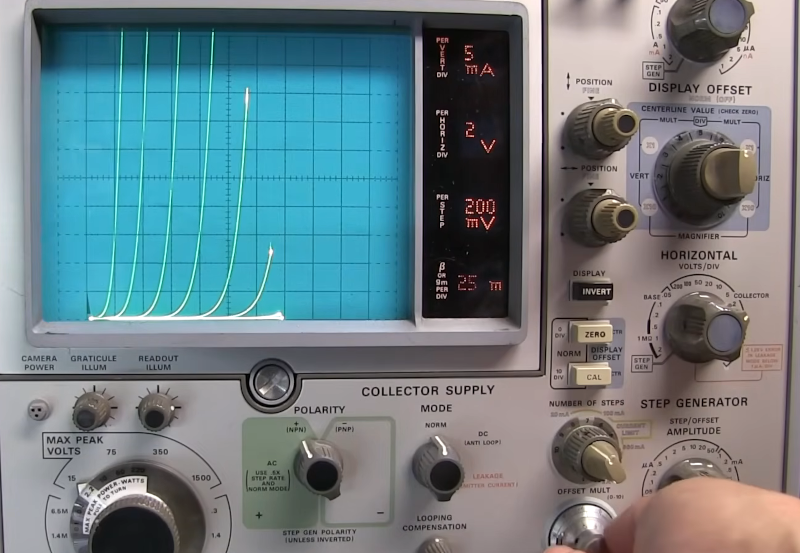We always enjoy videos from [w2aew]. His recent entry looks at vertical or VFETs, which are, as he puts it, a JFET that thinks it is a triode. He clearly explains how the transistor works as a conductor unless you bias the gate to form a depletion zone.
The transistors have a short channel, which means they conduct quite well. The low gate resistance and capacitance mean the devices can also switch very quickly. These devices were once in vogue for audio applications. However, they’d fallen out of favor until recently. The reason is that they work quite well in switching power supplies.
How good is the on resistance? So good that his meter reported the probes were shorted instead of measuring the resistance. Pretty good. We’ve seen these VFET transistors used as switches to drive magnetic field coils many years ago and they replaced much more complex circuitry.
The curve tracer in the video is a beautiful instrument of its own. The digital displays give it a high tech yet retro look. A curve tracer, if you haven’t used one, plots stepped voltages against current flowing, and is very useful for examining semiconductor devices. While not as fancy, it is possible to make one to connect to a scope quite easily.
We are pretty sure that it is a Tektronix 576. We watched a repair of a similar unit, the 577, if you’d like to see some (probably) similar insides.
















Thanks for sharing info about this interesting component! I hope they will get more common now that they apparently have a more general use case than high-end audio equipment, so I can get my hands on them :)
It’s a little bruising for my ego to see the counter still reading “No comments” and “0 thoughts” after my contribution. :)
Now it updated. Fine!
Back in the day Teledyne made devices they called Fetrons, which were solid-state tube replacements using JFETS: https://en.wikipedia.org/wiki/Fetron
Anyone knows a small signal, low noise VFET that is in production? I’d liketo play around with one, or a few…
Ditto!
The only vertical JFETs I’m aware of were high power devices.
The video gives an explanation of static induction transistors. My impression of those devices from about 1992 was that they were inherently power devices; the structure was incompatible with making making small signal devices (but I could easily be wrong.) They were expensive.
The datasheet shown in the video is for a LD1014D, described as a Trench Power JFET. A brief internet search for trench power “jeft” images leaves me with the impression that the TPJFET has a structure similar to the SIT, but not the same.
Protip: if you ever go to buy or sell a curve tracer, don’t. Or more precisely, do not ship it. Do local pickup, because few of them survive shipping. Apparently it’s likely that one or more of the extremely heavy transformers in them will bend/break their mounting brackets and destroy other components.
You can make one yourself, using ordinary oscilloscope in X-Y mode as output device. The simplest one I’ve seen used a transformer to get a 50Hz sine from mains and used few passive components to show V-I curve on the analog scope.